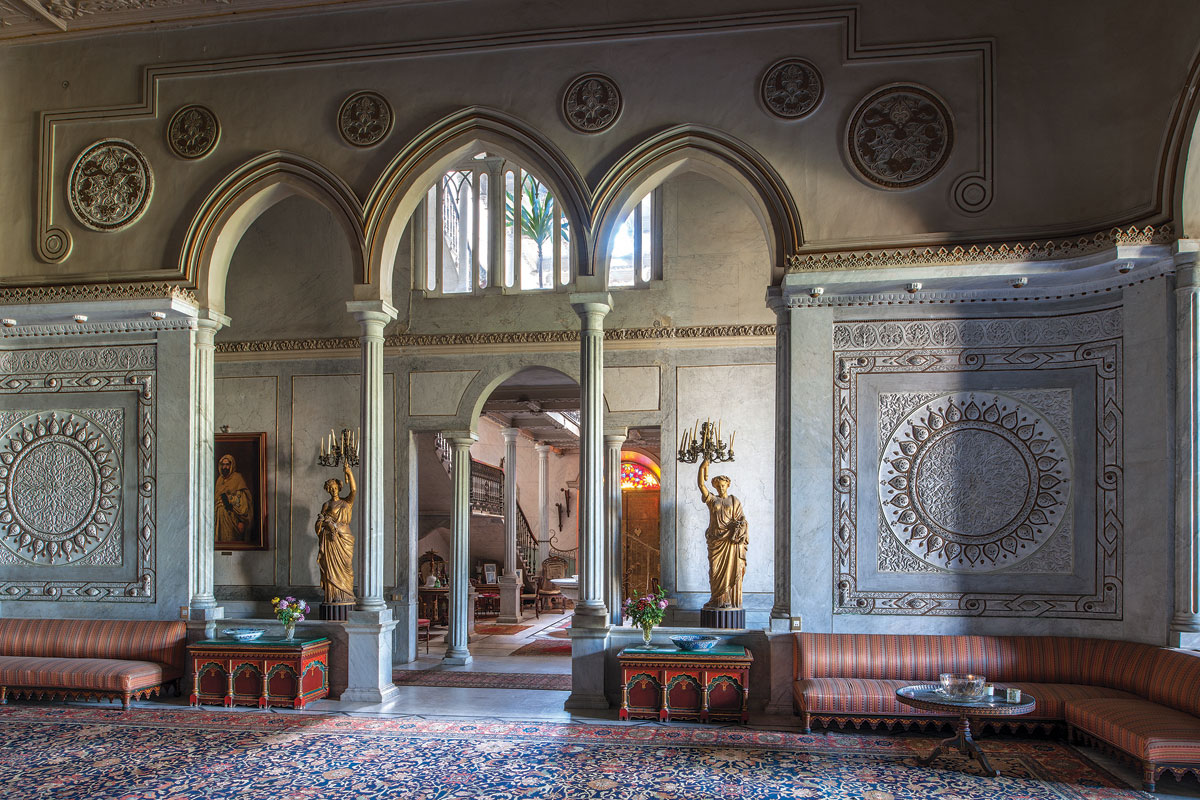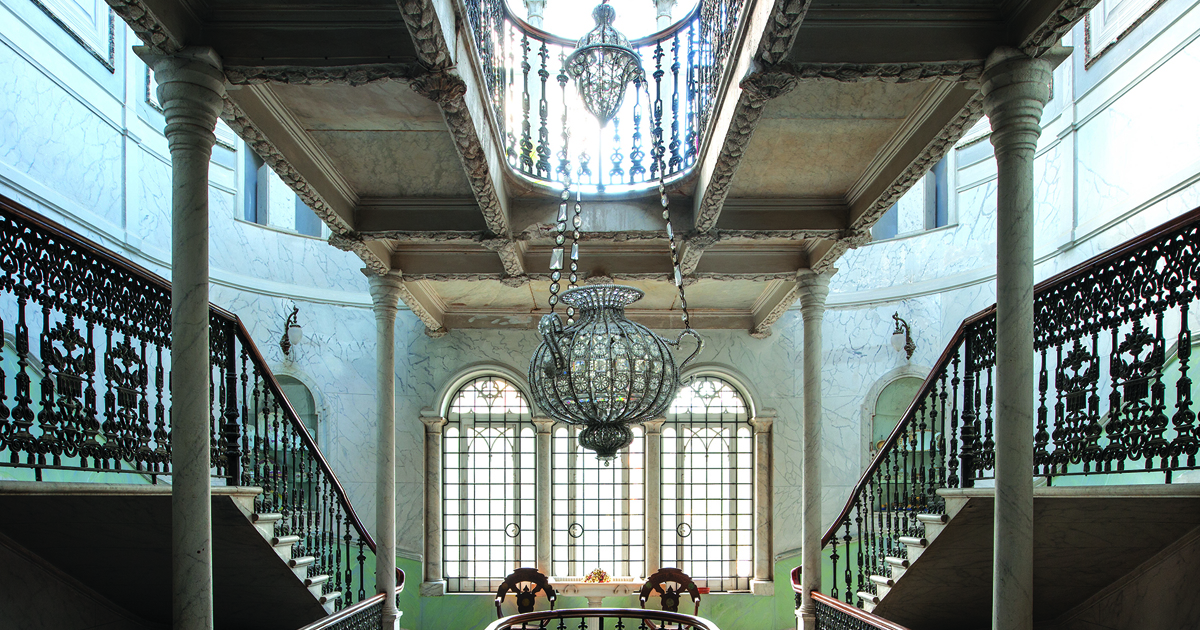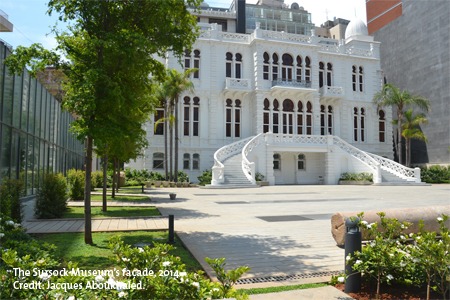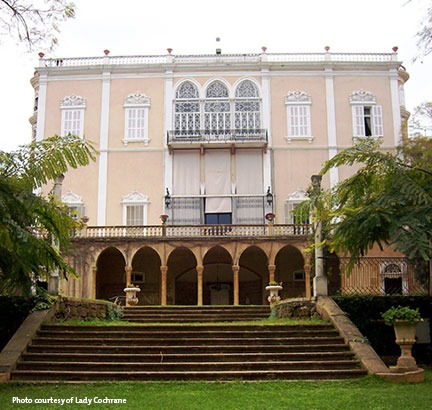A walk through Beirut’s historic Sursock neighborhood reveals a grand past and a city still in transformation.
Located in the Achrafieh district of Beirut, Rue Sursock is one of the city’s most historic neighborhoods. Once a “humble” weekend getaway for a few of Beirut’s most prominent families, namely the Sursocks, Bustros’ and Feghalis, today the 18th and 19th centuries mansions are few and far between.
A handful of impressive villas and palaces though still remain, leaving a hint of the glorious past that once dominated the area and one that begs to be discovered with a self-guided tour.
Feghali House
Begin your leisurely stroll at the Feghali House, on the intersection of Sursock and Nicolas Ghosn Street. Peer through the grand iron clad gates to see the newly refurbished private residence, a perfect example of classical Levantine architecture.
Villa Paradiso
Just a quick walk away, on Mar Antonios Street, parallel to Gemmayzeh’s Rue Gouraud, is another beautiful part crumbling villa, named Villa Paradiso, also owned by the extended Feghali family. The house was built in delayed stages – the ground floor was mostly built in classic 19th century Ottoman style, some parts date further back. The first floor was an early 20th century addition, built in the ‘French Mandate’ style. The façade of the house shows the significant influence of art nouveau on traditional Lebanese architecture.
Villa Paradiso’s elegant colored three arched window designs, stay true to one of the most characteristic features of Lebanese architecture. Seven years ago, the Feghalis set about restoring the house, replacing the roof and creating new interior space while being careful to maintain its authentic features. British artist Tom Young recently restored the space for his Carousel exhibition with a vision for it to become a cultural and social hub.
Greek Orthodox Archbishopric
Next stop is the Greek Orthodox Archbishopric of Beirut. Although the original ornate table in the reception area dates back to 1904, the structure itself is said to be much older. Originally part of the Sursock Palace grounds, the house was donated to the bishopric by the Sursock family when a relative was excommunicated from the church.
According to Lady Yvonne Cochrane, who was born into the Sursock family, her uncle gave the property to the then Archbishop as a kind of appeasement to be re-accepted into the church. The wall that now separates the grounds of the two residencies was added later on.
Sursock Palace
Originally built in the 1860s, Sursock Palace is now the residence of its original owner’s granddaughter, Lady Cochrane, who inherited it at the age of two. Of all the Sursock residences, it is the largest and the only one to retain its pristine glory, due to the renovation efforts of the family.

The house, designed as one large rectangular structure, was built by master buildings in the traditional Lebanese style of architecture, according to Giorgio Tarraf of the Save Beirut Heritage foundation.
A double flight of white marble stairs leads to the main entrance on the south façade and after passing though the grand doors there is an uninterrupted view of the entire 35-meter length of the great hall.
The doors that open into the grand salon and dining room (along with the entrance) are from the XVII century and were brought from Naples. On the south side of the door leading to the dining room, the walls are lined with collections of Italian paintings from the 16th and 17th centuries originally housed in the Palazzo Serra di Cassano in Naples, the home of Lady Cochrane’s maternal grandfather, the Duke of Cassano.
The library is Lady Cochrane’s private sitting room and is paneled in mahogany. It features a large portrait of Madame Isabelle Bustros (born Sursock) by French painter Bordes . Madame Bustros was the aunt of Lady Cochrane and having no children of her own, adopted her niece. She died in 1958 at 96 having exercised great influence not only within the Sursock family, but also socially and politically within Lebanon.
In the garden the visitors’ kiosk is even older than the main house and was converted into Turkish baths when the house was built in 1860. It was later converted into guest rooms.

Lady Cochrane expresses sadness at the lack of importance placed on Beirut’s heritage buildings, among an environment of fast-paced construction and development of which she believes the high rise apartments are destroying the city’s identity. “There used to be many beautiful houses in this area, many have disappeared. It’s terrible,” Lady Cochrane says looking out from the grand salon of her house onto beautiful grounds.
Vast gardens which once filled the Sursock area have long disappeared and the Sursock Palace grounds is one of the few, of significant size, that remains across the whole of Beirut, after landowners sold their houses and gardens for speculative building.
Back in 1960, Lady Cochrane co-founded The Association for Protecting Natural Sites and Old Buildings (APSAD). The association has helped to restore and save numerous heritage buildings over the years, from the restoration of the façade of Jounieh’s Town Hall in 2003 to the rehabilitation of the Jounieh souk in 2001.
Having seen the city change around her though, Lady Cochrane is cynical for the future, “Everything is being destroyed right, left and center. We’re not having much success in the protection of heritage in Lebanon. Beirut 1,000 times dead, 1,000 times resuscitated,” she sighs.
Bustros Palace
As you cross the street and head towards the main road, to the right you’ll find Bustros Palace, built in the 1930s. Today it houses the Ministry of Foreign Affairs and Emigrants.
Sursock Museum
Back on Sursock Street, across from the Archbishopric, is the Sursock Museum, scheduled to reopen after refurbishment in November 2014. The residence of Nicolas Ibrahim Sursock was built as a private villa in 1912. It is a great example of Lebanese architecture of the late 19th and early 20th centuries, mixing features Charles Malek Avenue Gemmayzeh, sursock street from both Venetian and Ottoman architectural influences.

In this period of history, all residential structures in Beirut followed these architectural elements. Nicolas Sursock, a Lebanese art collector and prominent member of the Sursock family, who died in 1961, bequeathed his villa to the city of Beirut. According to his will, the villa was to be transformed into a museum to house Lebanese artists’ works. Since 2007, the museum has been under extensive renovation and expansion.
Villa Linda Sursock
End your tour at the Villa Linda Sursock, now a temporary location for the Bristol Hotel’s (+961 3 500 622) catering and events. The restored palace is the ideal location to get a real sense of the pomp and grandeur associated with an aristocratic lifestyle. Every weekday, from 4-6pm, English-style high tea is served here with select finger foods in the luxurious and historic setting of a Sursock palace.
Photo courtesy of Lady Cochrane

Website: sursockpalace.com
Article edited on October 31, 2021
Loading

